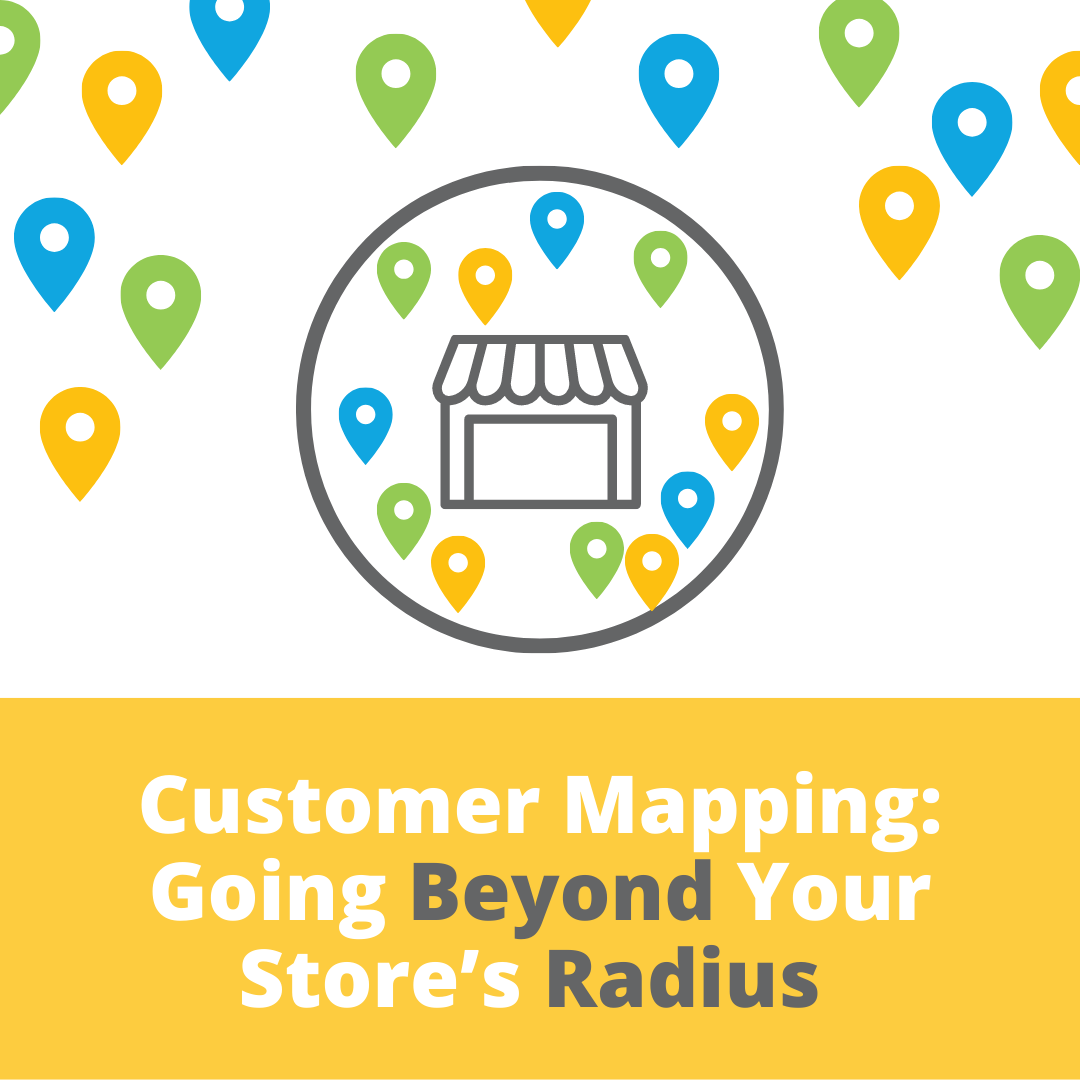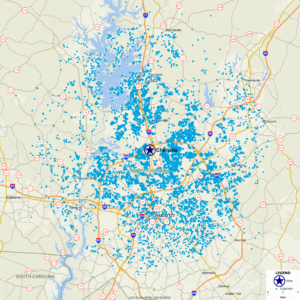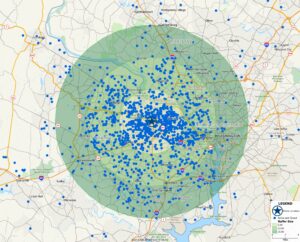
A common practice to find new prospects is pulling a list of names within a certain mile radius of your store. Most of the time, this is an effective method to identify new leads. But occasionally, this method can hurt your marketing efforts. It’s important to know who your customers are and where they are coming from. Customer mapping can help you identify exactly what areas you should target.

Blue dots represent where customers are in relation to the store (marked by a star).
Three factors can skew your radius list results.
1. Store Location
If your store is situated in a highly populated area with lots of foot traffic, the closest houses may be in a different income bracket than your best customers. Understanding the geography and financial landscape surrounding your store will help you determine whether or not you should target those who live nearby.
2. Specialty Items
If your store sells specialty items, the items won’t be as readily available. This means customers are not buying from you because you are conveniently located, but rather, they are making a point to come to you. Customers will often travel further for specialty items. Your clients may drive across town or may even come from a different city.
3. Destination
If your store is a destination spot, your customers will most likely live outside of your radius. Your customers are coming for the experience, and they don’t mind going out of their way to get it.
What should you do when your customers don’t live nearby? How do you choose who to target? How do you select which areas to concentrate on? The best way to do this is through customer mapping. Data scientists will place all of your customers on a map, so you can see where your highest market penetration is and what your marketing footprint looks like.
Once they have your customers mapped out, they can analyze the neighborhoods and zip codes where your customers live to identify common traits. Next, data scientists can take that information and find other areas with similar attributes, so you can target more people who look like your best customers.

This is a distance study highlighting customers’ locations from the store in 5 mile increments.
Customer mapping can help you understand three things.
1. Customer Demographics
Mapping lets you see where your customers live, so you know if they live in a single-family home or a multi-family unit. You’ll see the average home cost, household income, and number of people in each home. Data scientists can take that spatial data and identify hundreds of other lifestyle and behavioral data points to help you understand your customers better.
2. Customer Locations
Not only does mapping show you where your customers live, but it also shows you how far they are willing to go to get to your store. You can even see which competitors they’re passing on the way. And if you’re trying to find the best spot to open a new location, mapping can show you the greatest concentration of customers and where a new location might be needed.
3. Gaps in the Market
Once you know where you are penetrating the market, data scientists can identify other areas that share similar attributes. This will let you know if there are gaps in your marketing coverage or if there are new areas of opportunity to focus on.
While it’s important to identify the prospects in your store’s radius, it’s also important to know where your customers are. This will help you make informed decisions about where you should look for new customers and how to best use your marketing dollars.
If you would like to see a map of your customers, let’s connect.
